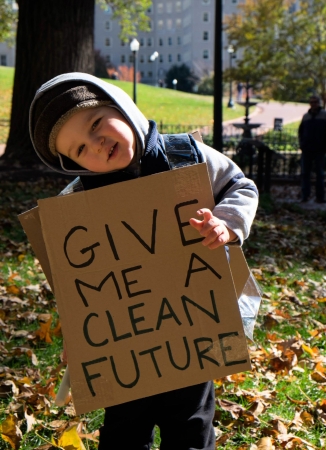Cross posted from Power for the People VA
Occasionally I ask other people to write for this blog, not merely because I am lazy, but also because energy policy is such a broad topic that I sometimes overlook new developments and perspectives. This week guest blogger Jane Twitmyer takes a step back from the battle over our energy future to point out that the battlefield itself is shifting under our feet—a fact which, if ignored, could cost utility customers dearly. –I.M.
A favorite utility narrative holds that the federal Clean Power Plan is the reason we must upgrade our electric utility system and reduce emissions from fossil fuels. Without it, we could continue to run our big coal and gas plants and leave unchanged the transmission grid that has served us so well. But the truth is, the EPA as ‘bully’ is a myth. A new report from the North American Electric Reliability Corporation (NERC) concludes “significant changes are occurring” in the way we generate and use electricity regardless of whether or not the Clean Power Plan, still under court challenge, is implemented. One change: NERC has tripled the amount of new renewable energy generation it predicts for next year.
NERC is just catching up with analysts and investment banks, who have been documenting the changes for several years. The Rocky Mountain Institute warns that grid-connected, solar-plus-battery-storage systems “will be economic within the next 10-15 years for many customers in many parts of the country,” undercutting utility sales and turning electricity markets “upside down.”
Investment analysts agree. CitiGroup predicts utilities could suffer a “50%+ decline in their addressable market.” Elon Musk, CEO of Tesla, just made an offer to buy SolarCity because he believes on-site generation will eventually supply a third of our total electricity, and will be accompanied by huge amounts of battery storage like Tesla’s Powerpack.
Musk believes electric cars will increase demand for electricity, but other analysts see energy efficiency lowering demand. Efficient buildings are given a central place in the new energy mix in the NERC report.
Using less energy, or increasing our energy intensity, will reduce demand significantly without creating the economic disaster we have been warned will occur. Minnesota found the state’s efficiency programreturned $4 for every $1 invested, helping to create almost $6 billion in new economic output. One of Warren Buffet’s utilities expects to reduce demand enough to close a couple of old coal plants and still not need any new generation until 2028. The utility is financing those retrofits for its customers’ buildings.
E-Lab, a group at the Rocky Mountain Institute that works with all industry stakeholders to chart our electricity systems, also sees changes in grid management systems making delivery of electricity more efficient. Pilot projects using new technology with grid-regulating software and designed with a variety of regulatory changes and financing models are being tested all around the country.
Each kilowatt-hour supplied by a rooftop solar panel, stored in an on-site battery, or saved by an efficient building, means one less kilowatt-hour utilities must generate. This inevitable reduction in central grid demand is why the future isn’t just about switching resources, like burning gas instead of coal, or even building solar and wind farms. The future is about a re-imagined system that allows and encourages you and me and our local mall to make our own electricity on-site, feeding some of what we make into storage and some onto the grid, and allowing us to draw on the grid when we need to.
We have the technology to create the new system, and regardless of any new EPA rules, this is the right time to replace the old technology. In 2010, 70% of our coal plants and all of our nuclear facilities were more than 30 years old. Recently SNL Energy identified 21,357 MW of coal, gas and nuclear generation“at risk” of early closure through 2020, plants that are inefficient and no longer economic to run.
Here in Virginia, our utilities don’t seem to be getting the message. Dominion Virginia Power has chosen to put most of its new investment dollars into large-scale natural gas plants, not renewable energy. Five or six years ago natural gas was believed to be the ‘transition’ fuel that could take us from coal to renewables-based electricity. We now understand that methane, released when extracting and distributing gas, is 86 times more potent as a greenhouse gas than CO2 while it is in the atmosphere. In addition, methane emissions have been both underreported and inaccurately measured, raising concerns that the climate impact of natural gas may be far greater than originally thought. New methane rules are being developed that should give us a better picture of actual emission levels, but it is already clear that if natural gas is a bridge fuel, the bridge must be a short one.
With analysts predicting the transition to renewable energy will happen sooner rather than later, investing heavily in new gas plants carries a significant economic risk as well as a climate risk. Investors like UBS Bank believe too many large plants will be “structural losers,” assets whose use is diminished before they are paid for. Going forward, we will still need to use some measure of natural gas, but natural gas can no longer be labeled the ‘transition’ fuel.
Our utility systems are at a crossroad. One road requires our utilities, our regulators and our legislators to re-imagine our electricity system, rethinking the old monopoly rate regulations that reward centralized fossil fuel generation. This reimagined system will require a grid that is no longer the rigid one-directional distributer of electricity, but rather one that finds value in resources that generate and store electricity where it is used. If we fail to take that road, the alternative path will lead to ‘grid defection’: customers choosing to leave the grid and provide their own electricity by installing solar with batteries and retrofitting their buildings to use less. One thing is certain: a top down, monopolistic, state-regulated system is NOT the future.
As NERC concluded, changes to the energy mix, and to the level of demand, are happening with or without the Clean Power Plan. They are happening because it is time to rebuild our aging energy infrastructure. They are happening because the technology is now available to create an energy system that protects our air and our water as well as our atmosphere. And the changes are happening because a rebuilt system, designed as an interactive network, not a one directional, top-down grid, will actually be a cheaper system. It will be a system that is more reliable and more resilient, as well as more secure from storms and attack. That rebuilt system will serve Virginia’s electricity customers better without risk to our air, our water or our climate.
Jane Twitmyer is a renewable energy consultant and advocate.



 Sign up for the Blue Virginia weekly newsletter
Sign up for the Blue Virginia weekly newsletter

![Tuesday News: “For Biden, Aid Package Provides Welcome Boost on the World Stage”; Biden the Big Winner of This Congress; “A potential reckoning [Trump’s] spent a lifetime eluding could be coming.”; Abigail Spanberger Will Be the Dems’ 2025 VA Gov Nominee](https://bluevirginia.us/wp-content/uploads/2024/04/bidenbigwinner-238x178.jpg)







